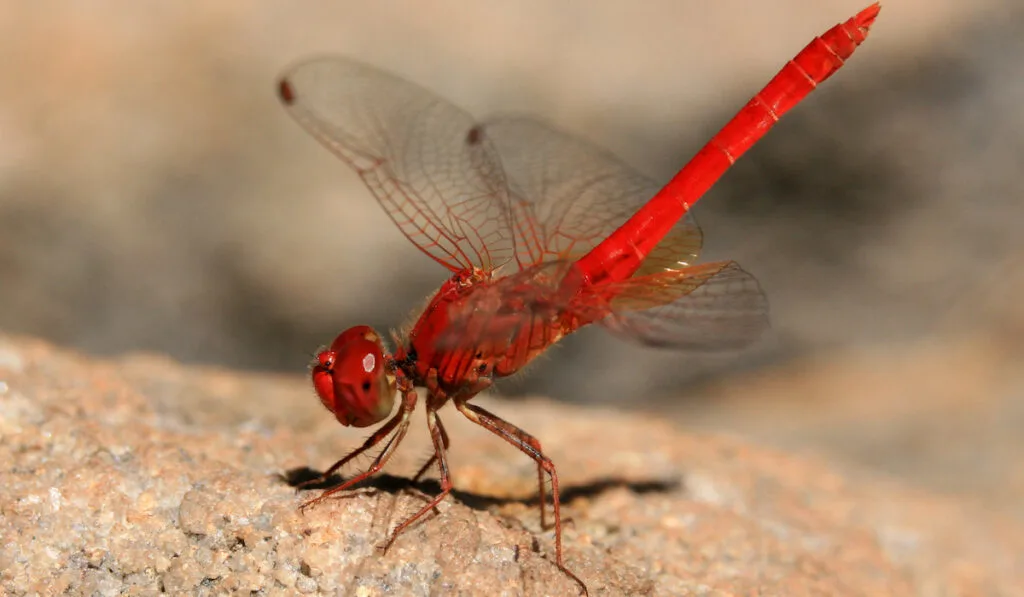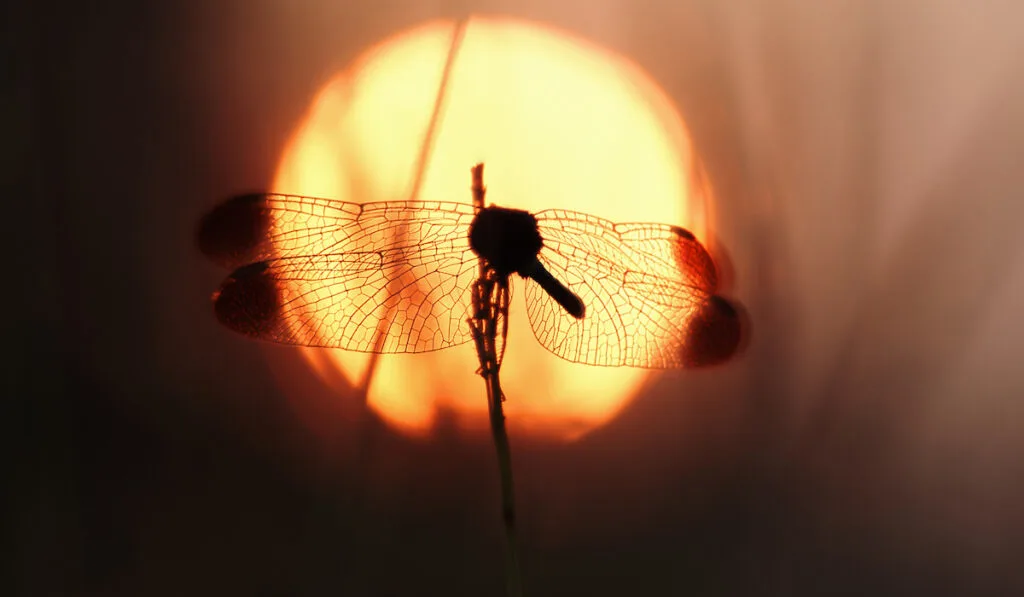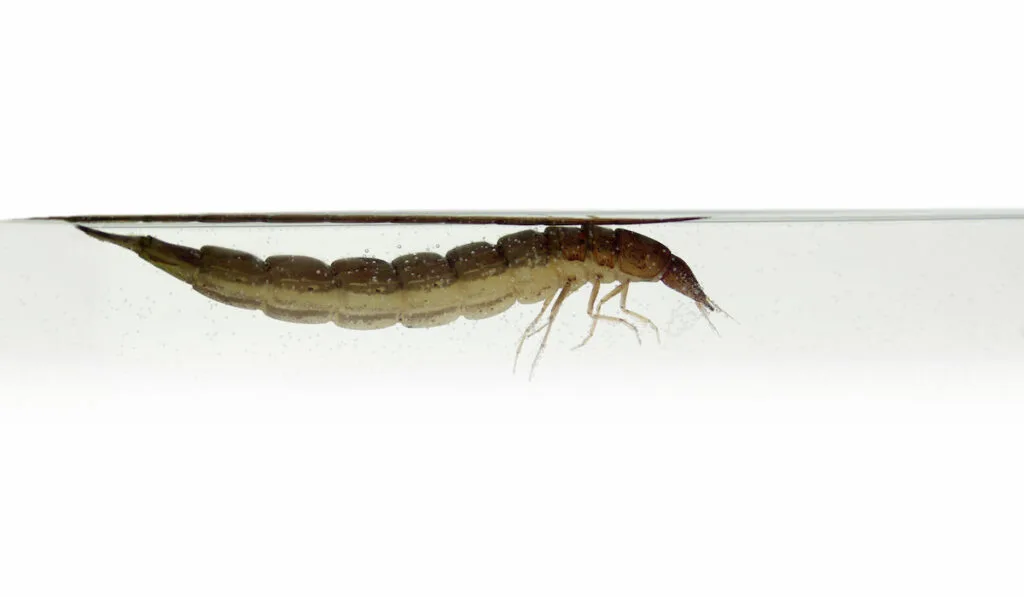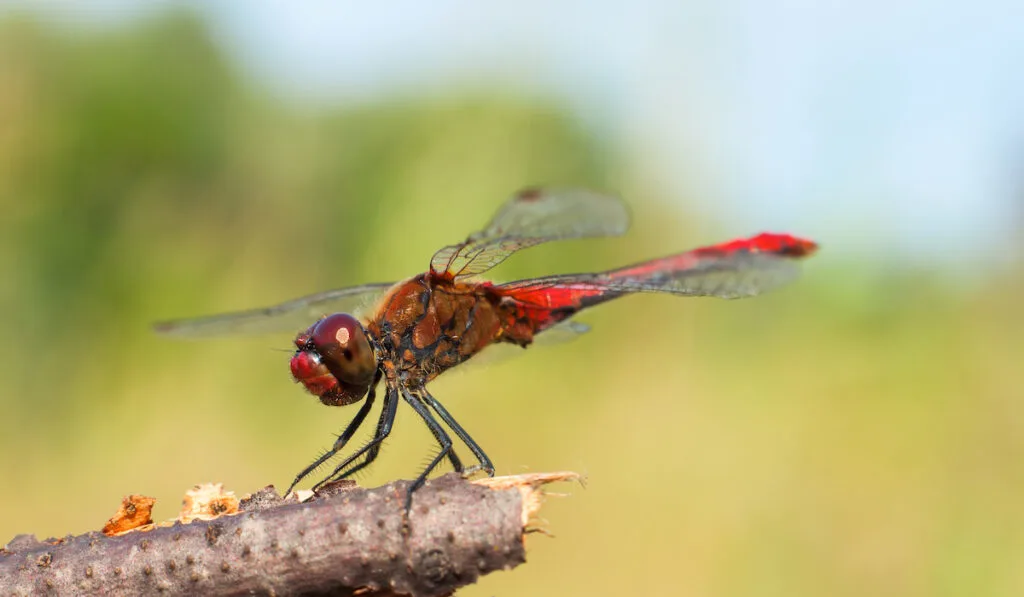Dragonflies fly just about anywhere but where do dragonflies sleep? When they alight on something to rest, do they have a preference? How, even, do dragonflies sleep?
Dragonflies are creatures of change – they go through various stages of development, and so, depending on maturity, their sleeping arrangements change. As they develop through aquatic and dry land stages, their sleeping spots adapt with them.
What’s more, though, is the fact that their sleep isn’t 100% what we think of as normal sleep. Insects are very different from mammals, and their interpretation of sleep varies just a bit, too.
The Circadian Cycle

Dragonflies are reliant on periods of downtime, just like any other living organism. They need that ‘disconnected’ period for the body and brain to recharge. But they don’t exactly tuck away for a full state of being asleep, as we are used to seeing and living.
They follow circadian rhythms of wakefulness and inactivity that function rather as sleep cycles. They are active and fly about during the day and at dusk, but they become inactive and static overnight.
Dragonflies, like most insects and animals in general, have circadian rhythms of wakefulness that we could interpret as sleep cycles.
They may fly at dusk but are inactive during the night. So, basically, they totally sleep – but in more of a dormancy-focused manner.

For all organisms with a brain, sleep and shutting off the brain from full-on consciousness is essential for a properly functioning brain. And this includes both mammals and insects.
Dragonflies follow those circadian signals to shut down, allowing their brains dome downtime to reset and ensuring they are alert when it’s time to fly, eat or escape once more.
Dragonfly Life Cycles & Sleeping Changes
Where a dragonfly sleeps, though, depends on where they are in their life cycle.
After hatching from an egg, every dragonfly begins as a larvae (commonly called a nymph). Dragonflies spend most of their lives in the larval stage – often up to two years. And during this time, they are aquatic beings.
They live in the water, swim through the water, eat just about anything in the water (mosquitos, other larvae, tadpoles, worms, leeches, other dragonfly nymphs, etc.).

They are fully equipped at this point to breathe in water through their gills. Because of this, they need never leave the water and so they sleep underwater, camouflaged among aquatic plants and gasses periodically.
Before a dragonfly fully transitions from pure underwater beings, they will molt up to 17 times before being fully land-based lifestyle ready.
That final molt happens outside of their watery home, as the dragonfly ceases being aquatic and bursts onto the scene ready to breathe in air.
In fact, a few days before the last molt, a nymph will sense the change is about to happen and will transition to living – and sleeping – in shallower waters, nearer the surface.
After they transition to this adult stage, the newly christened dragonfly has no choice but to rest. While they wait for their new wings to harden, something that can take hours or even days, they are relatively sedentary.
Once those wings do fully develop, they are still relatively weak, so the dragonfly can only travel a few feet at a time. For this reason, they will often sleep still nearby their previous watery homes.
Since they are a bit vulnerable, they will tend to seek shelter and camouflage for their resting place. You can often find them among tall grasses or under leaves near water sources while resting.
The adult dragonfly has begun, though, its short life expectancy as an adult. Adult dragonflies tend to have lifespans of no more than eight weeks, with some living as few as two weeks in their adult form.
A Dragonfly’s Preferred Homes
Since dragonflies begin their life in water (and then do not live terribly long after leaving their aquatic homes), most dragonflies prefer to stick close by.
You can find dragonflies living and sleeping near freshwater sources often: ponds, lakes, rivers, swamps, etc. Dragonflies with a shorter larvae cycle can even be found in simple rain puddles.

Many adult dragonflies choose to stick near their watery homes. Often that is because they cannot yet fly far and other times it is because they have not had (and probably won’t have) much time to migrate. Others, though, are stronger fliers and will sometimes be found a long way from water.
When it comes to entering their sleep cycles, an aquatic nymph and a land-based dragonfly still value protection. In both instances, they will seek out shelter or camouflage.
Underwater, aquatic plants, grasses and roots provide excellent cover to sleep among. On the land, dragonflies will sleep tucked away in buses or under leaves, or sometimes more out in plain sight, if they feel sufficiently camouflaged.
Dragonflies do sleep. And while they may not have permanent dens, such as mammals do, to crawl into at night, they have learned to adapt and find safe spots for sleeping.
Whether in their aquatic nymph form (among grasses that stay safely underwater) or on the land (hidden away from predators in bushes, trees or leaves), a dragonfly values protection and security before they enter their times of inactivity.
